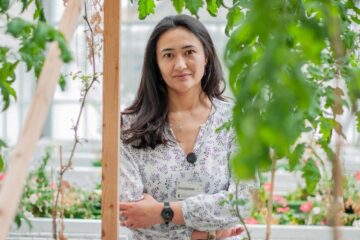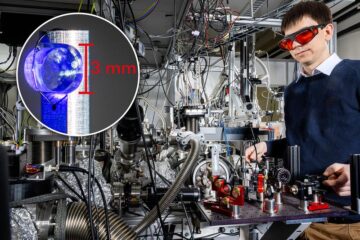USM Unveils Plant Genome of Billion-dollar Global Industry

The Minister of Higher Education Dato’ Seri Mohamed Khaled Nordin announced at CCB@USM yesterday that this major achievement could lead to many end products and contribute to the billion dollar rubber industry.
Khaled stated that CCB@USM had successfully decoded the draft of the 2 billion base genome of the rubber tree Hevea brasiliensis through its chemical biology discovery platform.
“This project is a result of an international collaboration led by CCB@USM that forms an excellent foundation for major contributions to society at the bottom billion,” he said during the press conference.
Also present were the Vice Chancellor of Universiti Sains Malaysia Prof. Tan Sri Dato’ Dzulkifli Abdul Razak, the Chief Executive Officer of CCB@USM, Prof Maqsudul Alam, and the Chief Operating Officer of Malaysian Biotechnology Corporation, Dr. Wan Abdul Rahman Wan Yaacob.
Khaled added that the most significant benefit of this finding was that it will help the nation in developing a high quality breed of rubber tree with resistance to diseases such as South American Leaf Blight and white root.
He also explained that Malaysia could potentially be the hub for rubber tree biotechnological research in Asia and at the same time train competent younger generation of scientists skilled in various disciplines such as genomics, molecular biology, and bioinformatics.
The Deputy Director (Research) of CCB@USM, Prof Nazalan Najimudin, expressed that this effort will empower the nation (Malaysia) to remain as the leader in rubber research and be at the forefront in the global rubber industry. This will enhance Malaysia’s competitiveness in rubber production. Malaysia is currently the world's fourth biggest producer, after Indonesia, Thailand, and India.
“The genome information will enable researchers to understand genetic characteristics of different breeds of rubber trees well in advance compared to conventional breeding techniques that are currently being used. As an example, for the development of the rubber tree for the timber or wood industry, determination of the girth of a rubber tree may take 10 to 12 years. With this genome information, we may be able to detect varieties that are able to produce large girths as early as a year or less.”
“This is one obvious benefit that we could obtain from this rubber tree genome. There are many other biotechnological studies which deal with pharmaceuticals, health, and others that can be performed.”
Nazalan also explained that institutions of higher learning contribute to innovations that could give high benefits to the national economy.
“This study relies upon the belief that for us to advance and obtain good returns involving the rubber tree, we must have the fundamental knowledge and the basic information on the rubber tree itself.”
“Filing of intellectual property claims requires one to possess information or knowledge which is not yet released to the public domain. Therefore, this genome sequencing project allows us to discover key information and protect them before others can exploit and make claims. “
He reiterated that furniture from rubberwood has proven popular and is an important export for Malaysia. The trait that can be developed and improved is in the properties of rubberwood and the genome information will move this area of plant breeding very fast.
For further enquiry, please contact:
PROFESSOR NAZALAN NAJIMUDIN
DEPUTY DIRECTOR (RESEARCH)
CENTRE FOR CHEMICAL BIOLOGY (CCB@USM)
UNIVERSITI SAINS MALAYSIA
11800 PENANG
MALAYSIA
Email: nazalan@usm.my
Phone: +60 12 598 5600
Media Contact
All latest news from the category: Life Sciences and Chemistry
Articles and reports from the Life Sciences and chemistry area deal with applied and basic research into modern biology, chemistry and human medicine.
Valuable information can be found on a range of life sciences fields including bacteriology, biochemistry, bionics, bioinformatics, biophysics, biotechnology, genetics, geobotany, human biology, marine biology, microbiology, molecular biology, cellular biology, zoology, bioinorganic chemistry, microchemistry and environmental chemistry.
Newest articles

Biomarkers identified for successful treatment of bone marrow tumours
CAR T cell therapy has proven effective in treating various haematological cancers. However, not all patients respond equally well to treatment. In a recent clinical study, researchers from the University…

She deciphers how tomato roots communicate
Ora Hazak has always been fascinated by plants and is studying the signals that roots send to the rest of the organism. She aims to understand this communication in order…

Laser excitation of a nucleus
A long-awaited breakthrough opens the door to a new type of atomic clock and the investigation of fundamental questions in physics. After decades of investigation, researchers made an extraordinary quantum…





















